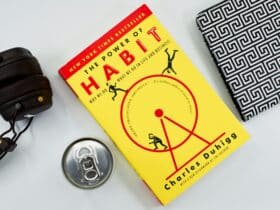How much time do you spend on Twitter, Facebook, and other social networking sites? It’s estimated that Robert Scoble spent over 2,555 hours on Friendfeed and Twitter in 2008, which is way more than a normal full-time job (2,000 hours).
Robert has essentially worked a full-time job with overtime for these two companies, pro bono. And don’t kid yourself into thinking that he’s the only one either.
But here’s the kicker: people like Mr. Scoble spend a lot unhealthy amounts of time building up profiles on sites they don’t even own.
Those of us who have spent enough time around the web realize that sites and services come and go, and to trust that one will be around forever is absolutely bonkers. Friendfeed, Facebook, Tumblr, Twitter… who knows what these sites will be in the next 10 years.
Sure, one could argue that Robert’s involvement on these 3rd party sites ultimately improves his personal brand. But if Friendfeed goes under, so does all those hours Robert spent on the site. Poof. Heck, Friendfeed was purchased by Facebook in August. Who knows what the future of Friendfeed?
The best way to safeguard yourself into losing everything you’ve worked so hard to create is to become your own platform, and not rely solely on a third-party to publish your content online.
Creating Your Platform
If you’re going to be a “creator” on the web, you can’t put your faith in a single platform like Facebook or Twitter. You’ve got to create your own.
I’m a huge fan of Twitter, and it’s an incredible tool to connect and gain an audience. When you put all your content’s eggs in one basket, you’re putting yourself at a huge risk. While I don’t think sites like Twitter or Facebook are going to go away any time soon (knock on wood), we don’t know how this Web thing will turn out. You may find in 20 years that all those hours you spent creating content on Tumblr or Twitter might just be lost for good.
But more importantly, when you’re trying to brand yourself, it doesn’t help when people only see you as a Twitter user first. You want YOUR brand first then the platform, not the other way around.
Be Everywhere, But Don’t Live Everywhere
I can already hear the next question asked: “So how do you develop a following and gain attention without leveraging popular platforms like Twitter and Facebook?”
You’re right: you have to utilize them. You just can’t rely on them. It’s a fine line to walk.
Sure, you still need to be on other platforms. I’m on Twitter, Facebook, and a few other places. But I don’t live there. Those places only help my personal brand. They’re only tiny pieces of my digital identity. Sure, it would stink if one of those places shut down one day, but I’d still have my own personal platform.
But where I spend most of my time is working on things that are 100% my own. If Twitter is ever bought by Nazis, I’ll still have LifeDev. Or Web Jackalope.
Note: I have no idea if Nazis are interested in a Twitter purchase, but from what I hear everyone is giving Twitter offers these days. I wouldn’t be surprised if the Nazis haven’t put in a bid too. But I think we can all agree that if Twitter was run by Nazis, we would all spend a LOT less time there. And we’d really regret all the previous time we spent sending tweets.
It’s Not Just Me
Look at the really successful content producers on the web who have Twitter and Facebook accounts. Sure, they tweet often and keep their followers engaged. But you can bet your biscuits they spend twice as much time creating content for their blogs and own sites.
Here are a couple easy tips to creating a personal brand that’s invincible to the ever-changing winds of the Internet landscape.
Make it about YOU. If you’re going to use 3rd party services like Twitter, try and make the focal point of the pages you by adding a unique design that mirrors your brand in some way. I tried to do this as much as possible with both my personal Twitter profile and Web Jackalope’s Twitter profile with designs that were similar to the original sites.
Keep the balance. Be conscious of how much time you’re spending on third-party sites as opposed to creating your own content. Try making a 1:1 rule, where for every 20 minutes you spend on Twitter/Facebook, etc., you’re spending 20 minutes writing content on your own site.
Point back to you. Virtually all social media and social news sites allow you to create profiles where you can point to your site. Make sure all the 3rd-party services point to your own domain.
Own, Don’t Rent
When it comes to online presence, you want to be an owner, not a renter of your brand. Just like in the housing industry, there are plenty of reasons that renting is appealing. If you’re an online renter, you don’t have to worry about servers, design, or many other things. But at the end of the day, you still don’t own anything.
All the resources that you put into building profiles at social networking sites and gaining followers show for nothing if the platform crashes.
Be your own platform, and reap the benefits.


















